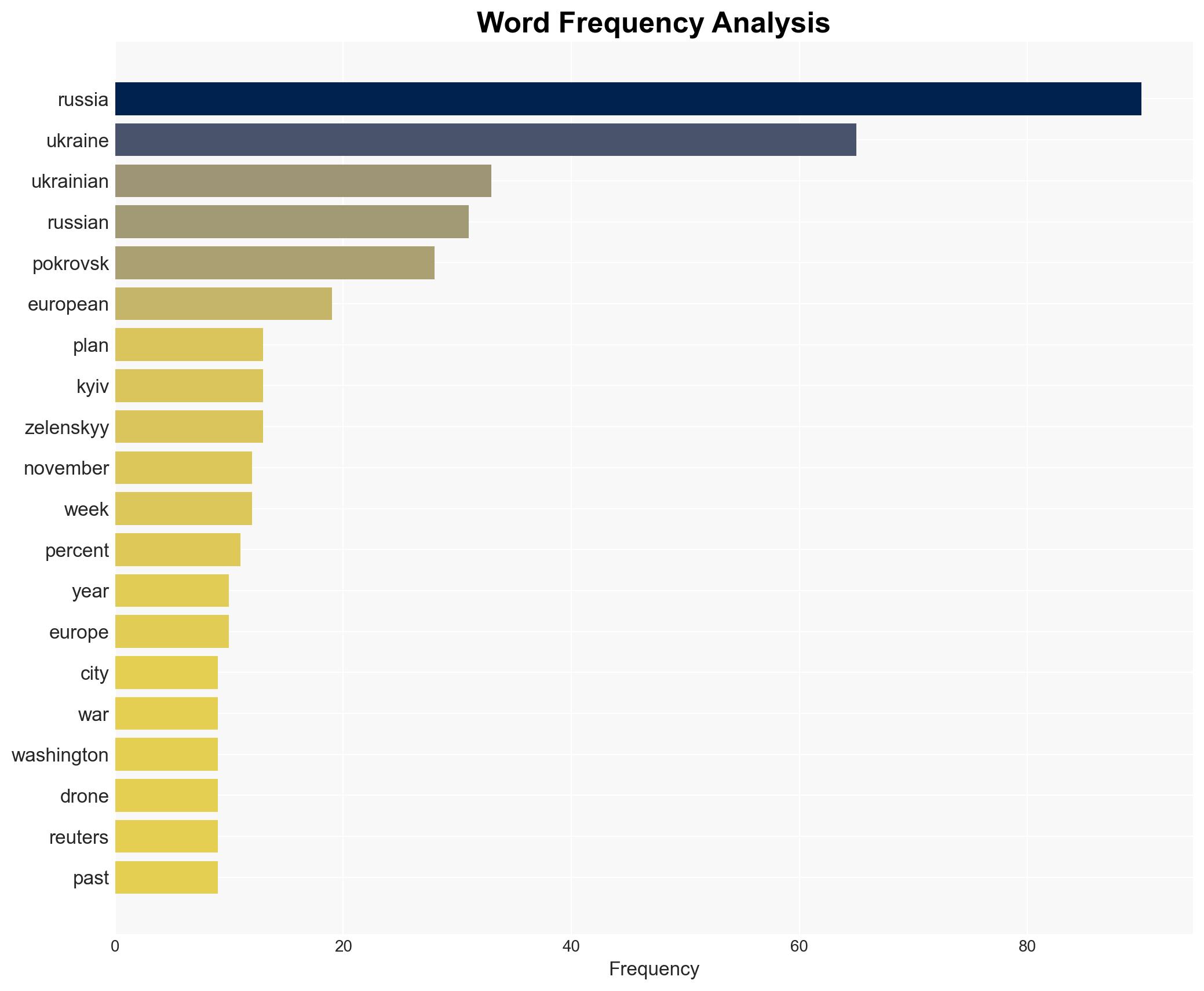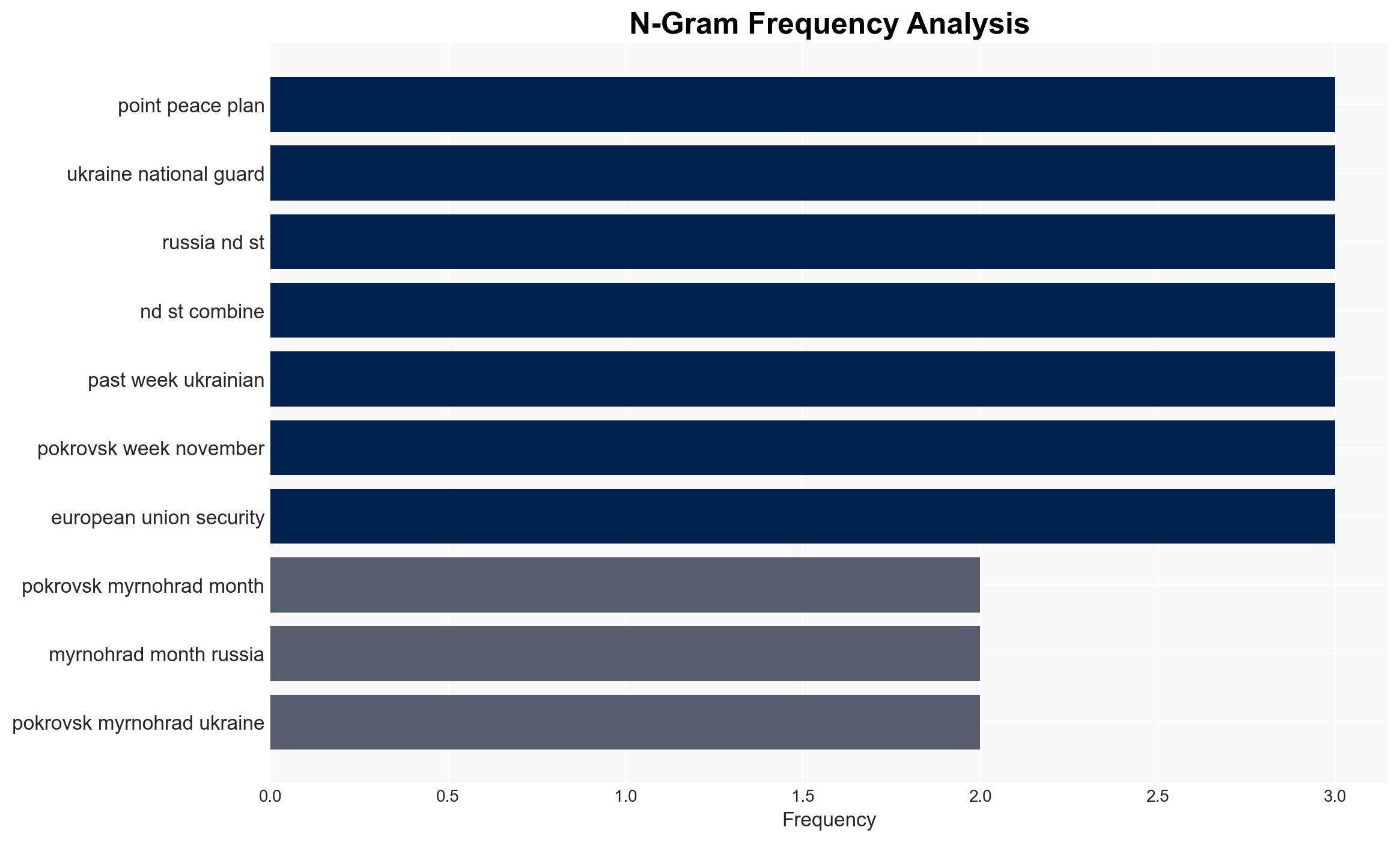Ukraine doubts Russias desire for peace amid reports of US-drafted plan – Al Jazeera English
Published on: 2025-11-21
AI-powered OSINT brief from verified open sources. Automated NLP signal extraction with human verification. See our Methodology and Why WorldWideWatchers.
Intelligence Report:
1. BLUF (Bottom Line Up Front)
There is a moderate confidence level that Russia’s actions and the US-drafted peace plan are not aligned with Ukraine’s interests, potentially leading to increased tensions between Ukraine, its European allies, and the US. Strategic recommendations include diplomatic engagement with key stakeholders and strengthening defensive capabilities in contested areas.
2. Competing Hypotheses
Hypothesis 1: Russia is using the US-drafted peace plan as a strategic tool to pressure Ukraine into concessions while continuing military operations to gain territorial advantages.
Hypothesis 2: The US-drafted peace plan genuinely aims to broker peace, but Russia’s military actions are independently driven by hardliners within its military command, undermining diplomatic efforts.
The first hypothesis is more likely due to the synchronized nature of Russia’s military actions with the timing of the peace plan proposal, suggesting a coordinated strategy to leverage negotiations for territorial gains.
3. Key Assumptions and Red Flags
Assumptions: The US-drafted peace plan reflects genuine intentions for conflict resolution. Russia’s military actions are strategically aligned with its political objectives.
Red Flags: Lack of consultation with Ukraine and European allies on the peace plan raises concerns about its legitimacy and acceptance. Reports of continued Russian military aggression contradict peace efforts.
Deception Indicators: Russia’s public statements of peace interest juxtaposed with aggressive military maneuvers suggest potential strategic deception.
4. Implications and Strategic Risks
The continuation of Russian military operations while peace talks are proposed could lead to increased regional instability. Escalation scenarios include potential breakdowns in diplomatic relations between Ukraine and its allies, increased cyber warfare, and economic sanctions impacting regional economies. Informational warfare may intensify as narratives are shaped to influence public opinion.
5. Recommendations and Outlook
- Engage in diplomatic discussions with the US to ensure alignment of peace efforts with Ukrainian and European interests.
- Strengthen defensive positions in contested areas to deter further Russian advances.
- Monitor Russian military movements and prepare for potential escalation in conflict zones.
- Best Scenario: Successful diplomatic engagement leads to a genuine ceasefire and peace negotiations.
- Worst Scenario: Breakdown in diplomatic efforts results in intensified conflict and regional instability.
- Most-likely Scenario: Continued military engagements with intermittent diplomatic efforts, leading to prolonged conflict.
6. Key Individuals and Entities
Volodymyr Zelenskyy, President of Ukraine; Oleksandr Syrskyi, Ukrainian Commander-in-Chief; Russian military command; US diplomatic representatives.
7. Thematic Tags
Regional Focus, Regional Focus: Eastern Europe, Ukraine, Russia
Structured Analytic Techniques Applied
- Causal Layered Analysis (CLA): Analyze events across surface happenings, systems, worldviews, and myths.
- Cross-Impact Simulation: Model ripple effects across neighboring states, conflicts, or economic dependencies.
- Scenario Generation: Explore divergent futures under varying assumptions to identify plausible paths.
Explore more:
Regional Focus Briefs ·
Daily Summary ·
Support us





